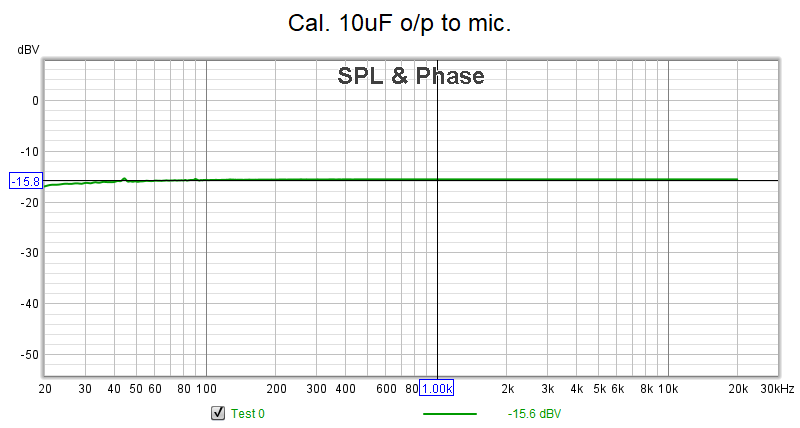Difference between revisions of "VOTER-Audio-Analysis"
(Created page with "= Introduction = This page shows the results of analyzing the audio response through an original through-hole VOTER board. As most of the background engineering on the design...") |
|||
| Line 10: | Line 10: | ||
The data was captured using [https://www.roomeqwizard.com/ Room Eq Wizard] software (version 5.20.5) on a Dell E6510, using the built-in sound card. The sound card response was calibrated out (calibration file created and applied). | The data was captured using [https://www.roomeqwizard.com/ Room Eq Wizard] software (version 5.20.5) on a Dell E6510, using the built-in sound card. The sound card response was calibrated out (calibration file created and applied). | ||
| + | |||
| + | The VOTER being used was built by VE7FET, and was running Firmware V3.00. | ||
In most cases, "zero" is actually about -15.8dBm, so through measurements would be relative to that. Sorry, I didn't feel like figuring out how to reference the measurement sweeps to zero out that correction. | In most cases, "zero" is actually about -15.8dBm, so through measurements would be relative to that. Sorry, I didn't feel like figuring out how to reference the measurement sweeps to zero out that correction. | ||
| + | |||
| + | |||
| + | This is the baseline measurement, with the calibration applied, with the output of the sound card connected to the input, using a 10uF capacitor on the microphone input (DC blocking). | ||
| + | |||
| + | [[File:VOTER Test 0.png]] | ||
The sweeps presented below should be used as a general representation of the audio characteristics of the path. This is definitely not a scientific, lab-grade experiment. I was more interested in what the relative responses were of various parts of the circuit, as well as the effect and operation of various option settings in the config file (and menus). | The sweeps presented below should be used as a general representation of the audio characteristics of the path. This is definitely not a scientific, lab-grade experiment. I was more interested in what the relative responses were of various parts of the circuit, as well as the effect and operation of various option settings in the config file (and menus). | ||
Revision as of 16:20, 22 March 2022
Introduction
This page shows the results of analyzing the audio response through an original through-hole VOTER board. As most of the background engineering on the design was lost with Jim's passing, some reverse engineering is required to dig deeper in to the design.
The data presented here analyzes the audio response between different sections of the various circuits in both the audio path, and the squelch/RSSI path.
Test Configuration
The data was captured using Room Eq Wizard software (version 5.20.5) on a Dell E6510, using the built-in sound card. The sound card response was calibrated out (calibration file created and applied).
The VOTER being used was built by VE7FET, and was running Firmware V3.00.
In most cases, "zero" is actually about -15.8dBm, so through measurements would be relative to that. Sorry, I didn't feel like figuring out how to reference the measurement sweeps to zero out that correction.
This is the baseline measurement, with the calibration applied, with the output of the sound card connected to the input, using a 10uF capacitor on the microphone input (DC blocking).
The sweeps presented below should be used as a general representation of the audio characteristics of the path. This is definitely not a scientific, lab-grade experiment. I was more interested in what the relative responses were of various parts of the circuit, as well as the effect and operation of various option settings in the config file (and menus).
